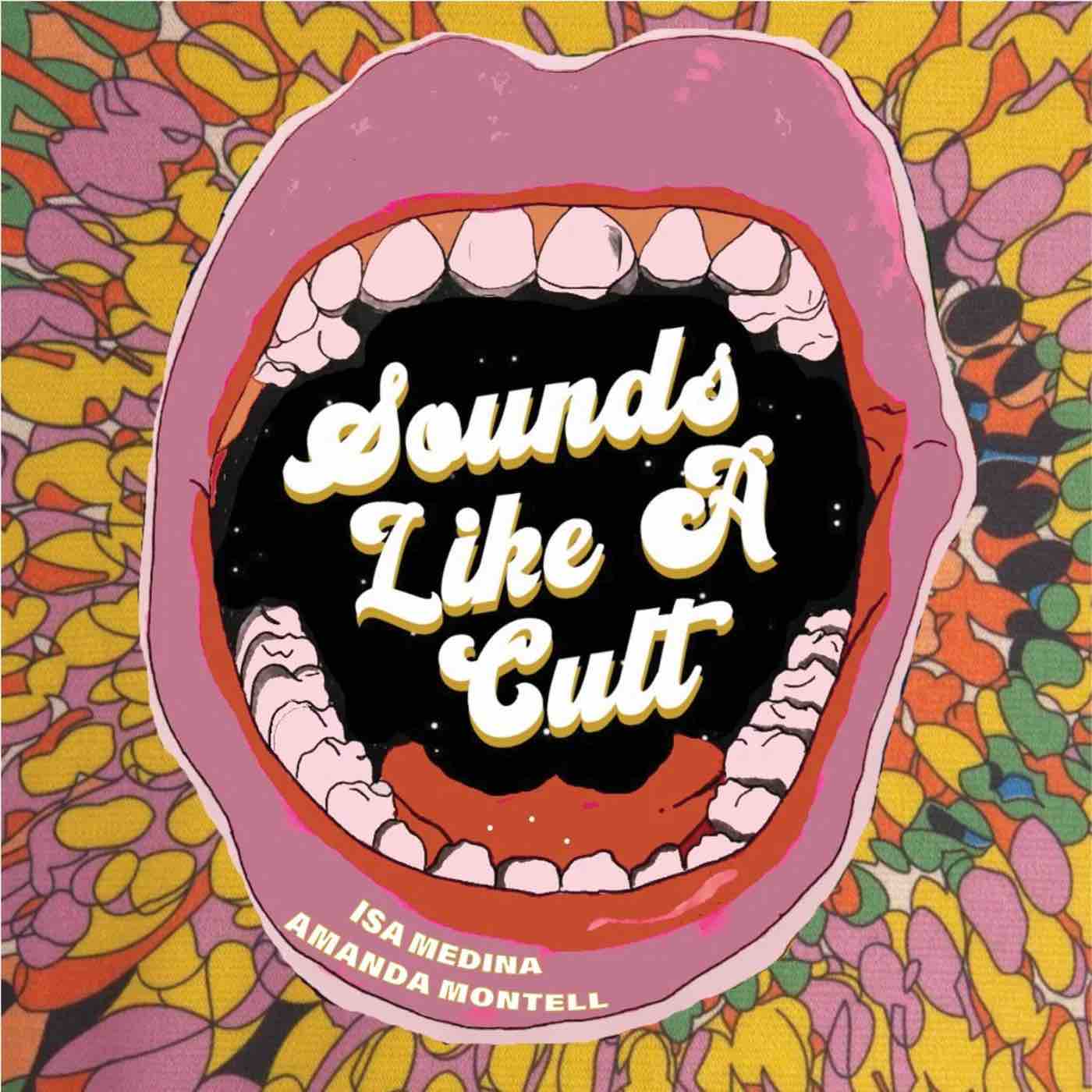If you’ve landed on this page, you’re probably curious as to what a podcast call to action is, and if you really need one. As a podcaster, you're not just sharing content but inviting listeners into a journey. A well-crafted call to action (sometimes referred to as CTA) transforms passive listening into active engagement, turning your audience into a community.
Whether subscribing, leaving a review, or following on social media, a good call to action bridges the gap between hearing and doing.
This article dives deep into mastering the perfect podcast call to action - from understanding its significance to implementing effective strategies that click with your listeners. Ready to learn the power of a podcast call to action? Let’s first start with the basics.

Book Your Next Podcast Guest the Easy Way
With more than 70,000 members, MatchMaker.fm is the largest online community connecting podcasters & guests.
Join MatchMaker todayWhat Is a Podcast Call to Action?
A podcast call to action directly appeals to listeners, encouraging them to engage in a specific action that supports the podcast's growth, engagement, or monetization goals.
This action can range from subscribing, leaving a review, or sharing the podcast with friends to visiting a website, purchasing a product, or attending an event. The essence of a CTA lies in its ability to convert passive listeners into active participants, creating a dynamic listener-podcast relationship.
At its core, a podcast call to action serves multiple purposes - such as:
- To tell listeners how they can support or get more involved with the show
- To drive traffic to a podcast website or social media platform
- To boost the podcast's visibility and listener base
Moreover, CTAs are essential tools for podcasters looking to monetize their content. They directly link podcast content and revenue-generating actions like sponsorships, affiliate marketing, or merchandise sales.
Understanding the art and science behind compelling CTAs is crucial for podcasters aiming to maximize their impact and achieve their objectives, whether just starting or looking to elevate their podcast to new heights.
How Often Should You Have a Call to Action?
Figuring out the right number of call to actions in your podcast episodes is key to keeping your audience engaged without overwhelming them. Including at least one CTA in every episode is a good rule of thumb to ensure consistency and listener engagement.
Sticking to a single CTA at the end might be your best bet for shorter episodes that are 20 minutes or less. For longer episodes, you might include CTAs at both the beginning and end - starting with a gentle prompt to subscribe or follow, and concluding with a stronger call to engage further (like visiting a website or supporting the podcast financially).
In shows with high listener engagement, it can be beneficial to introduce a mid-episode CTA, especially if it directly relates to the content discussed.
Can You Have Too Many Podcast Call to Actions?
You know what they say - it is possible to have too much of a good thing.
Overloading episodes with CTAs can lead to listener fatigue, so it’s crucial to strike the right balance. Each CTA should be relevant and add value, not just be there for the sake of it.
Regularly evaluate your call-to-action strategy based on listener feedback and engagement metrics to ensure it remains effective and not overbearing.
Where Should You Place a Call to Action?
The strategic placement of CTAs can significantly boost their effectiveness. Introducing a CTA at the beginning of your podcast can hook listeners early, especially with a gentle nudge to subscribe or follow.
For episodes longer than 20 minutes, consider adding a CTA in the middle to maintain engagement, particularly if it ties into the episode's content.
Ending with a CTA can leave a lasting impression and urge listeners to take a more substantial action, like supporting the podcast. Remember, the placement should feel natural and enhance the listener's experience, making each one count.
Intro & Outro Call to Action Examples
Call to actions should be tailored to where they appear in the episode. So, an intro CTA should sound differently to an outro CTA.
To put this into practice, an intro CTA could go something like:
Welcome to our show, where we explore [topic]. Make sure to subscribe to stay updated on our latest episodes.
And an outro CTA might include more actions, like this:
Thanks for listening! If you enjoyed this episode, please subscribe and leave us a review on Apple Podcasts. Visit our website at [YourWebsite.com] for more content, and follow us on social media to join our community. See you in the next episode!
These CTAs are strategically placed to engage listeners at the beginning and end of an episode - encouraging subscription, feedback, and further interaction with the podcast's content and community.
The Different Types of Podcast Call to Actions
On top of varying your podcast call to actions depending on where they’re placed, there are also different forms of CTAs to think about. These can be categorized broadly into General Podcast CTAs and Specific Podcast CTAs.
General Podcast CTA
A general call to action podcast prompt is an all-rounder designed to promote podcast growth and deepen listener engagement. They're about getting listeners to subscribe for future episodes, share the podcast to widen its reach, or leave a review to improve its ranking and visibility.
The purpose here is to cultivate a community around your podcast, encouraging a sense of belonging and loyalty among listeners. Some examples of a general podcast CTA include:
Hit subscribe to keep up with our latest episodes.
Share this episode with someone who'd love it as much as you did.
Leave us a review on Apple Podcasts - it helps more people find us!
Specific Podcast CTA
Specific CTAs, in contrast, are highly targeted. They're tailored to the content of a particular episode or a specific marketing campaign, aiming to direct listeners toward a precise action. This could be visiting a sponsor's website, signing up for a newsletter, or attending an event.
These CTAs are strategic, designed to support the podcast's specific goals or promotional efforts, turning engagement into actionable support. Some examples of a specific podcast CTA include:
Visit our sponsor's site with the link below for an exclusive offer for our listeners.
Sign up for our newsletter to dive deeper into today's topic.
Join us at our upcoming live event - details on our website.
How to Write a Good Podcast Call to Action in 7 Steps
Crafting an effective podcast call to action is an art that can significantly boost listener engagement and action. Remember that a call to action script is a good idea if you really want to nail the language and the messaging. Here’s how to write a good one in 7 steps:
1. Be Clear & Concise
Your podcast call to action’s clarity and brevity can make or break its effectiveness. Listeners should understand precisely what you're asking them to do without sifting through complex language or lengthy explanations.
A clear and concise CTA ensures the message is easily digestible and actionable. For example, instead of saying, "If you find it in your heart and have time, consider possibly subscribing to our podcast", streamline it to "Subscribe to our podcast for weekly insights."
And if your CTA includes a website or an affiliate code, consider spelling it out. For example:
For a 20% discount on [service], use code fresh20, that’s f-r-e-s-h-2-0.
2. Use Strong Action Verbs
Action verbs are the engines of your CTAs, propelling listeners toward the action you want them to take. Verbs like "subscribe", "download", "share", "review", and "visit" immediately communicate the action required and infuse your CTA with energy and direction.
For example, "Download our latest episode now" is direct and to the point, leaving no doubt about the next steps.
3. Create a Sense of Urgency
Incorporating a sense of urgency can motivate listeners to act immediately rather than putting it off. Phrases like "Subscribe now", "Offer ends soon", or "Join today" suggest that delaying might mean missing out.
However, this urgency must be genuine to maintain trust with your audience. An example might be:
Sign up for our newsletter by tonight to receive an exclusive bonus episode.
4. Make It Relevant
Relevance ties your call to action to your podcast's content, ensuring it resonates with your listeners. A CTA that aligns with the episode's theme or your podcast's overall niche feels more natural and compelling.
For instance, if your episode discusses productivity tools, a CTA like "Download our guide to boosting productivity, mentioned in today’s episode" directly connects the action to the listener's current interest.
5. Encourage Personalization
Personalizing your CTA can dramatically increase its appeal. Addressing listeners directly or suggesting that the action will benefit them personally makes it more engaging.
Tailor your language to feel like a one-on-one conversation, such as "Join our podcast family" or "Get your exclusive listener discount". This approach makes each listener feel valued and directly spoken to.
6. Include It in Your Show Notes
Including a call to action in your podcast show notes is an essential step that shouldn't be overlooked. While your audio content does the heavy lifting in engaging listeners, your show notes can serve as a secondary touchpoint for the action.
Here's why: Not every listener will remember or act upon a CTA heard during an episode. By placing your CTA in the show notes, you provide a clickable link or a written reminder of the action you wish them to take, whether it's subscribing, leaving a review, or visiting a specific webpage.
7. Test & Optimize to See What Resonates With Your Audience
Lastly, the effectiveness of call to actions can vary widely among different audiences and podcast formats. Regularly testing different CTAs and analyzing listener responses allows you to refine and optimize over time. Pay attention to metrics like click-through rates, subscription boosts, or engagement increases to identify what works best for your podcast.
An Example of a Good Podcast Call to Action
If you’re looking for a podcast call to action example, we’ve picked out one of our favorites below for you to draw inspiration from.
Example: Sounds Like A Cult

Sounds Like A Cult is a podcast hosted by Amanda Montell that explores groups and communities with intense, often cult-like followings. Montell uses the platform to dive into these dynamics and integrate CTAs, particularly when she has a new book release.
She introduces her book by mentioning its title and giving a brief description. To offer listeners additional content, such as behind-the-scenes insights into publishing or audiobook commentary on her previous work, Montell directs them to her personal Substack.
In her outro, she connects the podcast's content to her books, suggesting that if listeners find the show engaging, they might also enjoy her written work, effectively using her podcast as a channel to broaden her audience and encourage further engagement.
Ready to Write a Good Podcast Call to Action?
Whether you're crafting a podcast outro script or contemplating a call to action for your intro, these moments are golden opportunities to define CTA prompts that will engage your listeners further. In the world of podcasting, understanding the need to connect with your audience and provide them with something actionable is key.
Call to actions deepen listener engagement and encourage them to become active participants in your podcast's community. Remember, each episode presents a new chance to inspire action and foster a stronger connection with your content.

The #1 Podcasting Community
With more than 70,000 members, MatchMaker.fm is the largest online community connecting podcasters & guests.
Join MatchMaker today





